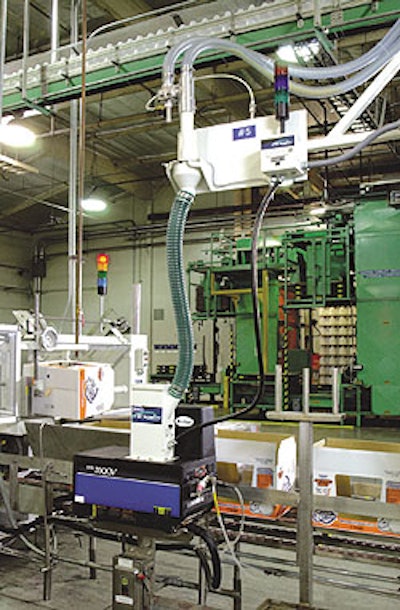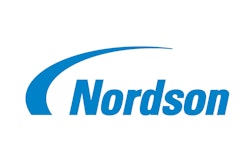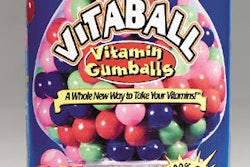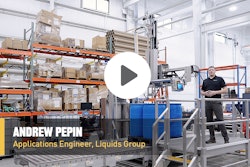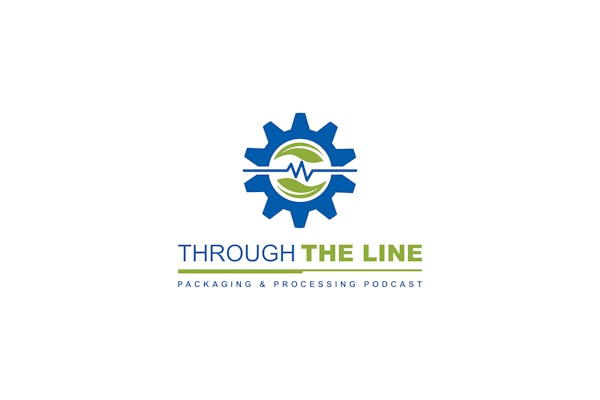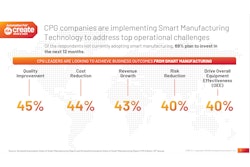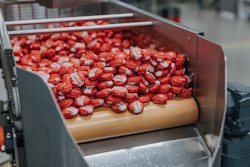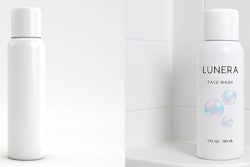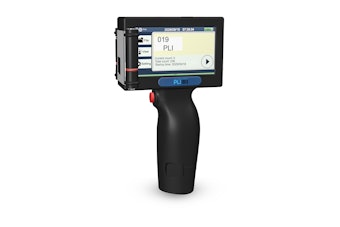Personnel at Sundor’s Sunny Delight facility in Anaheim, CA, had a less than delightful experience supplying the hot melt for five gluing units used for case erectors and sealers on two adjacent high-volume lines.
As part of this procedure, operators had to manually scoop the hot melt adhesive into each applicator’s glue reservoir. They were also required by the company to don protective gear including a face shield and gloves.
Sundor, a division of Procter & Gamble, turned to an integrated hot melt supply and distribution system from Nordson (Duluth, GA). Started up in last November, the Nordson Fill Sentry™ system automates most of the procedures, resulting in labor savings and improved performance. This includes:
• Adhesive supply that lasts seven days rather than replenished twice hourly at five stations.
• Clog-free applicator nozzle operation because of consistent glue levels and reduced charring.
• Reduced maintenance that enabled P&G to reassign two operators—one per line—to other duties.
The adhesive units are used on one line dedicated to 64-oz plastic bottles that operates two shifts daily, and a 128-oz bottling line that runs 24/7. Between the two lines, there are five glue units mounted on three case erectors and two case sealers.
Leading the plant’s effort were Mike Eigenbrod, mechanical project leader, Rosario Chavez, equipment specialist, Tawana Bhagwat, plant engineer, and Jorge Gonzales, plant manager.
Bin very good
The adhesive supply for the five glue applicators is stored in a film-lined bulk bin that holds 1겨 lb of the adhesive. Before, the adhesive was received in 50-lb boxes.
The bin sits atop a heavy-duty vibratory holder and is tilted to evacuate the beads into the system via vacuum tubes. The bin replaces small, individual supply hoppers located near each applicator from which the operator refreshed the applicator’s reservoir. Each of those individual bins held about 30 lb of glue.
Five vacuum tubes, one per applicator, extend down into the bin. Once an hour, an operator stirs the adhesive in the bin using a metal wand. Per P&G’s practices, the bin is covered with a flexible protective cover.
The beads are drawn through the tubes and five loading stations located above the applicators. A light stack at each of the five stations allow operators to see the system status without having to walk from station to station and manually inspect each hot melt unit.
On a signal from a sensor that communicates with a dedicated programmable logic controller, the supply from the loading station releases to maintain the level. Nordson upgraded the glue applicators with automatic level sensors.
Before, the five glue reservoirs were replenished every 30 minutes, which added up to three hours attention every 24 hrs.
Less ‘touchy’
P&G refers to manual intervention as a touch. “We equate that to effort hours, which relate to efficiency and the personnel needed,” explains Bhagwat. “There’s a big difference between five units filled twice an hour versus one bin touch hourly.”
That results in direct labor savings that were key to the cost justification of the project, Bhagwat reports.
There was also a weekly cleaning time of more than 30 minutes each for the five units, totaling around three hours. The cleaning required a lockout and shutdown of the equipment. That time has been eliminated through automation, plus the bulk bin lasts seven days before it is depleted.
In total, she says the project is expected to yield what P&G terms a rate-of-return of 1.3 years.
“We started out with the goal to free operators for an hour, and we ended up getting seven days. That’s what’s so phenomenal about this project,” Bhagwat says.
Sunny Delight also made a change to its adhesive. About six months prior to the new system, it had changed adhesive vendors through manufacturers representative Adhesive Brokers (Tustin, CA) to Adhesive Systems Inc. (Detroit, MI). To accommodate the new vacuum-based system, Sundor changed from a pillow shape to ASI 1241-P adhesive beads. The beebee-sized ethylene vinyl acetate pellets flow more easily through the system. The shape was the only property that changed, Bhagwat notes.
Bhagwat reports that the startup was smooth, accomplished in two and one-half days over a weekend versus the original five-day estimate, which Sundor deemed unacceptable. She attributes that largely to internal preparations, and especially to the efforts of Eigenbrod.
“Due to other projects and a tight schedule, that would have had a huge cost impact if that had been delayed for any reason,” says Bhagwat. It was also done during a short slack period, “but we were up and running overtime the next week,” she adds.
Bhagwat also notes that Eigenbrod designed the set-up such that the number of posts needed to support the system were reduced from 13 to 5. “He envisioned the layout so clearly,” she says.
Charring eliminated
Another major plus was that charring, which leads to clogged nozzles, has been eliminated. “We’ve had no issues with charring since the start-up,” says Bhagwat. She says charring was fairly common before, primarily because operators would inadvertantly allow the glue reservoirs to run too low and often adjusted the temperature. Then if a nozzle was clogged as a result of charring, it was often easier to replace it than to unclog it because it never really got clean enough, she points out.
Also, the unmanned adhesive system eliminates the potential for burns.
The automated system supplies the adhesive on demand, with a level-indicating signal from a sensor installed inside the glue reservoir. “There’s just the right amount of glue in there when we need it,” she says.
“Downtime to date has been next to none,” notes Bhagwat. “We’re delighted with the system.”
